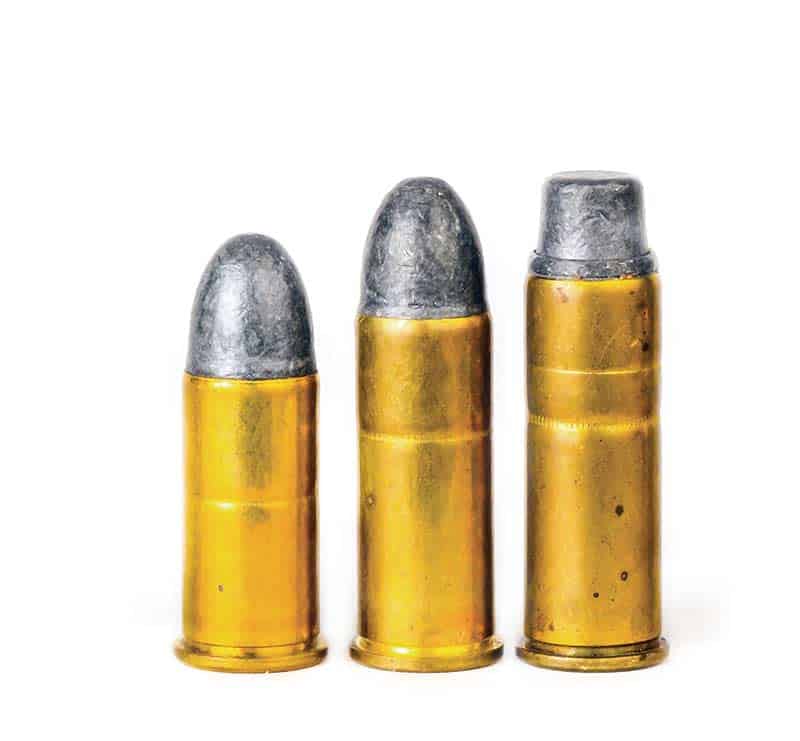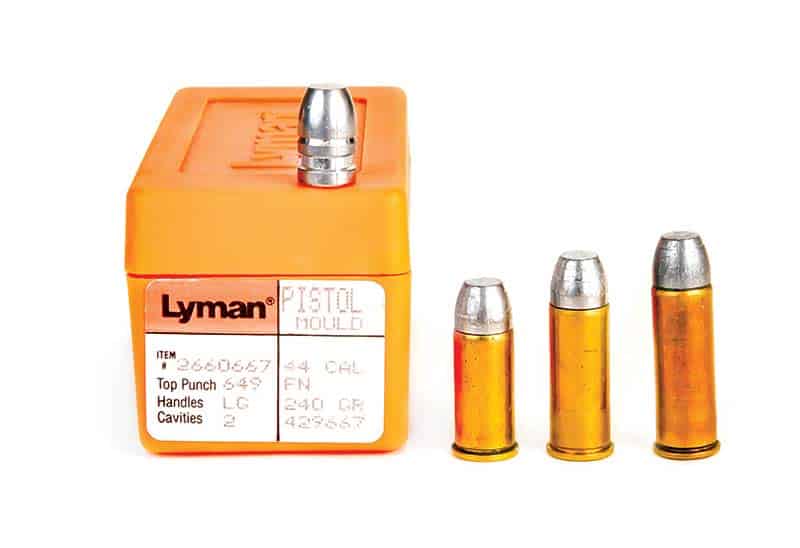Category: All About Guns
With the countless stories that would emerge from the Normandy landings, some of the most harrowing would come from the U.S. troops that stormed “Bloody Omaha” beach. Of the two primary U.S. landing beaches along the Normandy coastline, with “Utah” beach to the west of Pointe du Hoc and “Omaha” to the east, the landings at Omaha beach would result in far more carnage than the other American landing zones.
Omaha, the code name given to a five-mile stretch of the Normandy coastline, was divided into four sectors: “Charlie,” “Dog,” “Easy” and “Fox,” which were themselves further divided into sub-sectors. This beach was the designated landing zone for elements of the U.S. 5th Corps, consisting of the 1st and 29th Infantry Divisions along with supporting naval personnel and combat engineers.
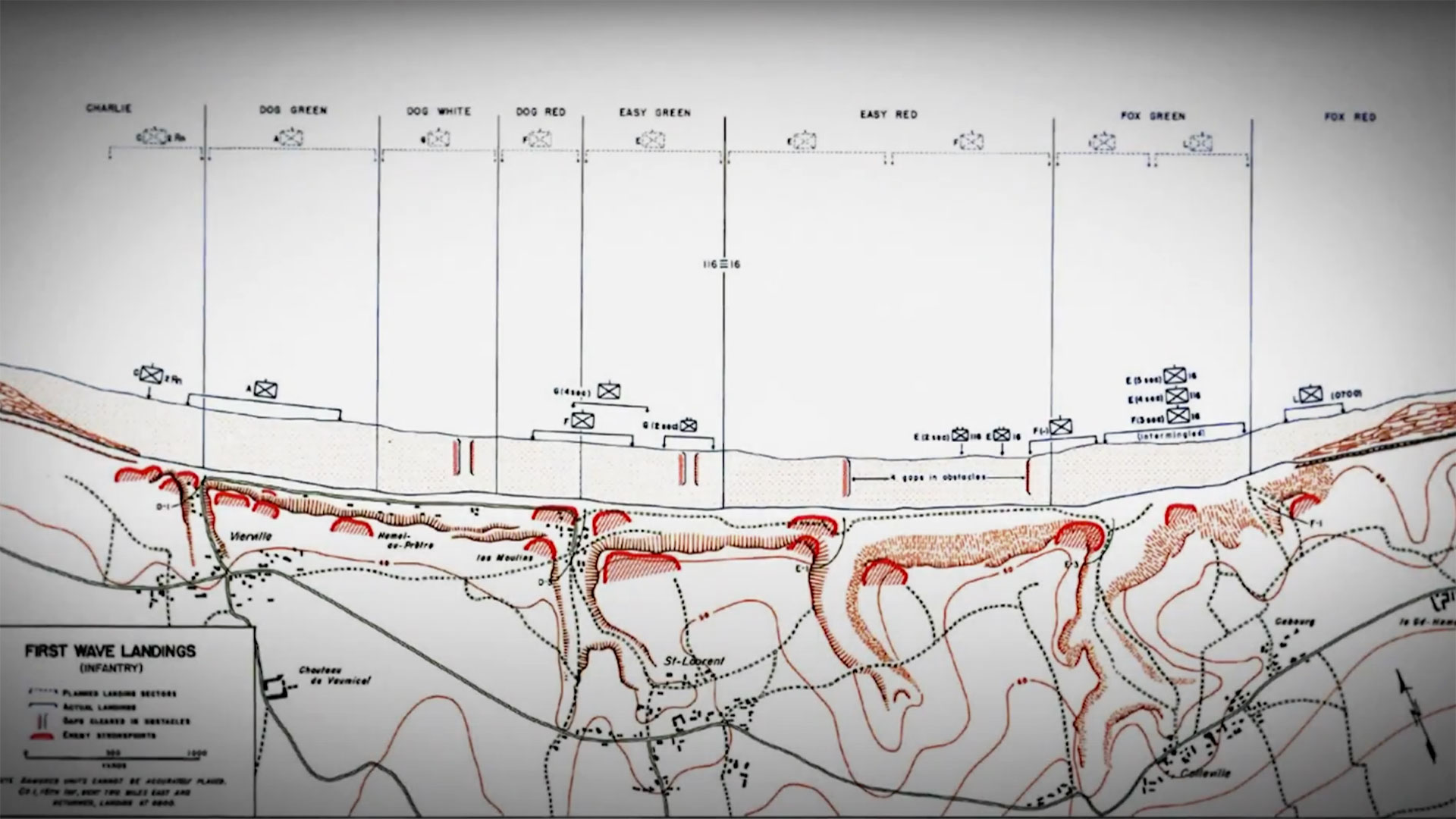
This stretch of beach features a large sandy shoreline overlooked by tall bluffs and rolling hills. the bluffs were fortified by the Germans in the years leading up to the invasion as a part of Hitler’s “Atlantic Wall,” which was intended to keep any Allied forces from landing along the conquered coastlines of Nazi-controlled Europe. The Germans built numerous concrete bunkers, machine-gun nests and other fortifications along the bluffs overlooking the beaches. On the shoreline itself, the Germans also emplaced tank traps, mines and various other wood and metal obstacles meant to prevent armor and landing craft from making their way up to the shore.
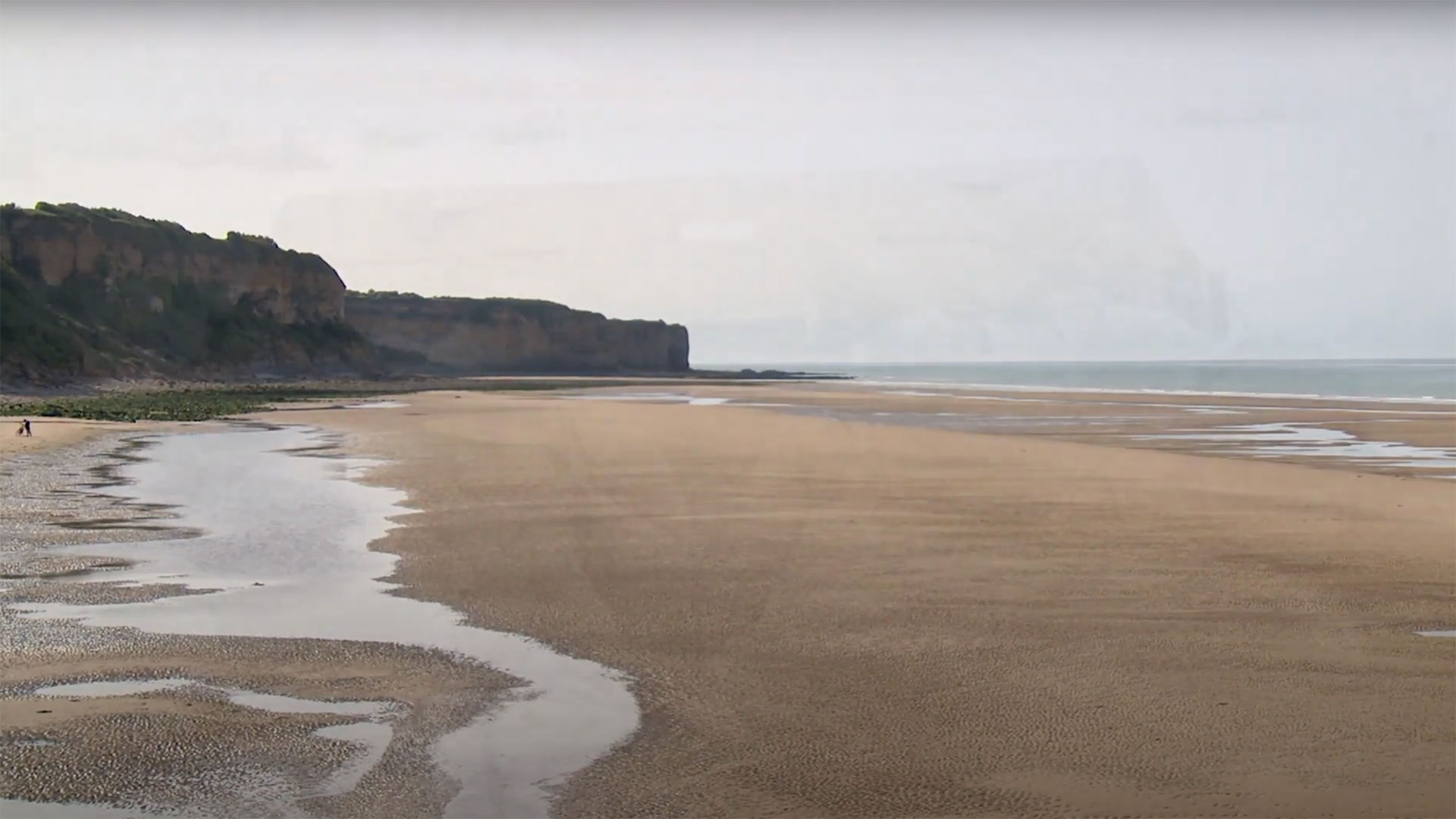
These German defensive positions along the coast were targeted by numerous Allied bombing raids in an effort to destroy them, but these raids did little damage to the fortified emplacements. In the hours before the landings, these positions were further shelled by naval artillery from a fleet of Allied vessels off shore, but this too had negligible effect on the defenses. To make matters worse, the German defenders of Omaha did not have to contend with the issue of paratroopers behind their lines as those defending Utah did. This in turn meant that the men going ashore at Omaha would be facing a focused, entrenched and well-armed enemy that was waiting for them.

On the morning of June 6, 1944, troops boarded their landing craft and prepared to make the journey ashore, but issues cropped up almost immediately. The less-than-ideal weather produced choppy seas, resulting in seasick crew and swamped landing craft. The rough water also caused a the majority of a group of M4 Sherman Duplex Drive amphibious tanks that were meant to support the troops on the beach to instead founder and sink. To make matters worse, a combination of smoke covering the shore and an eastward tidal current pushed many of the landing craft off from their designated landing sectors.
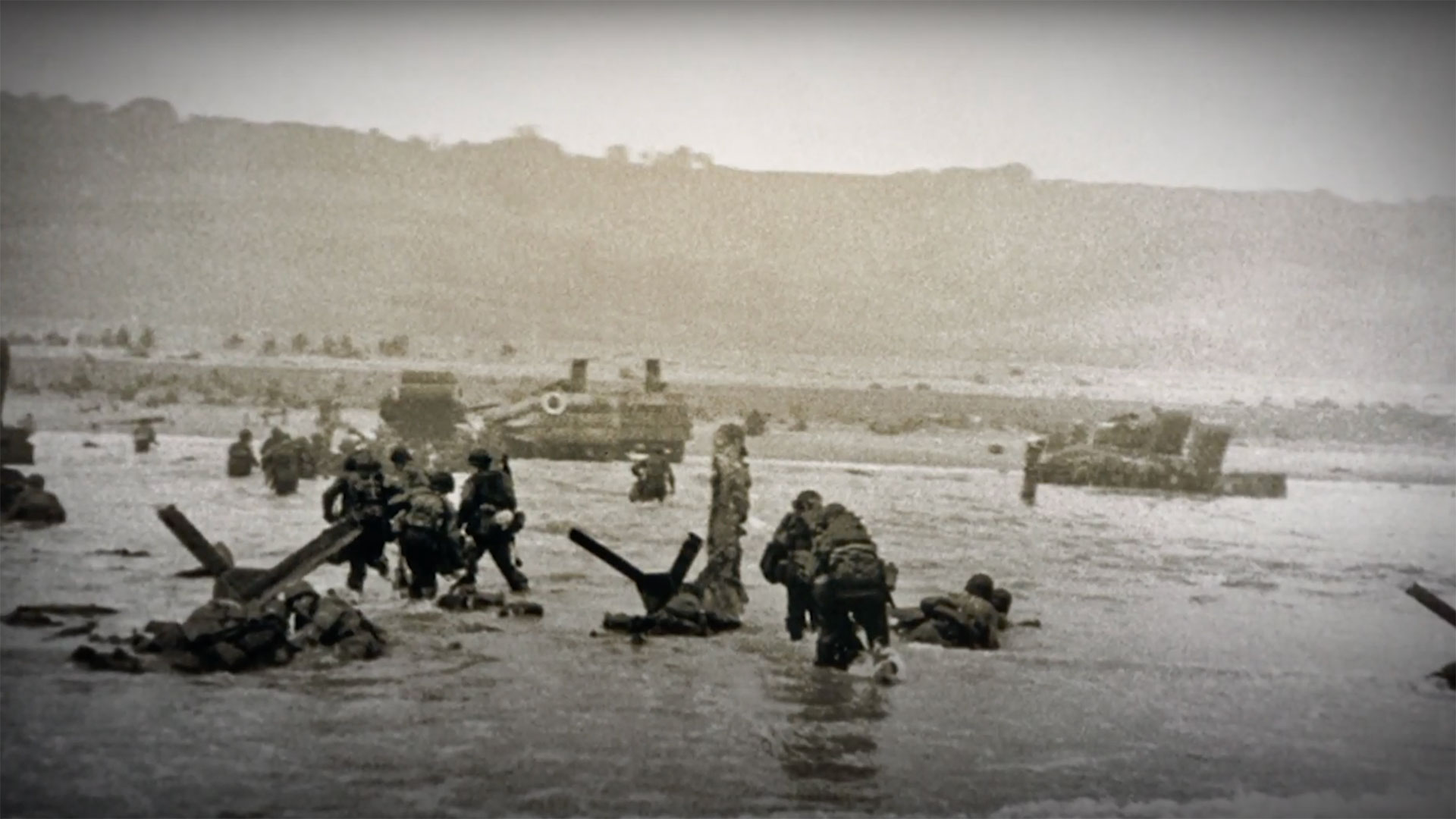
As the craft approached the beach, the German positions along the coastline opened up on them with mortars, artillery and machine gun fire. Obstacles in the water and on the beach prevented many landing craft from being able to get right up to the shoreline, forcing the troops they contained to wade ashore. The men of the first wave to hit the beach were soon greeted by a hail of fire from the numerous MG34 and MG42 machine gun positions spread out amongst the bluffs. Some men were cut down still inside the landing craft, with German gunners focusing in on them as the ramps dropped.
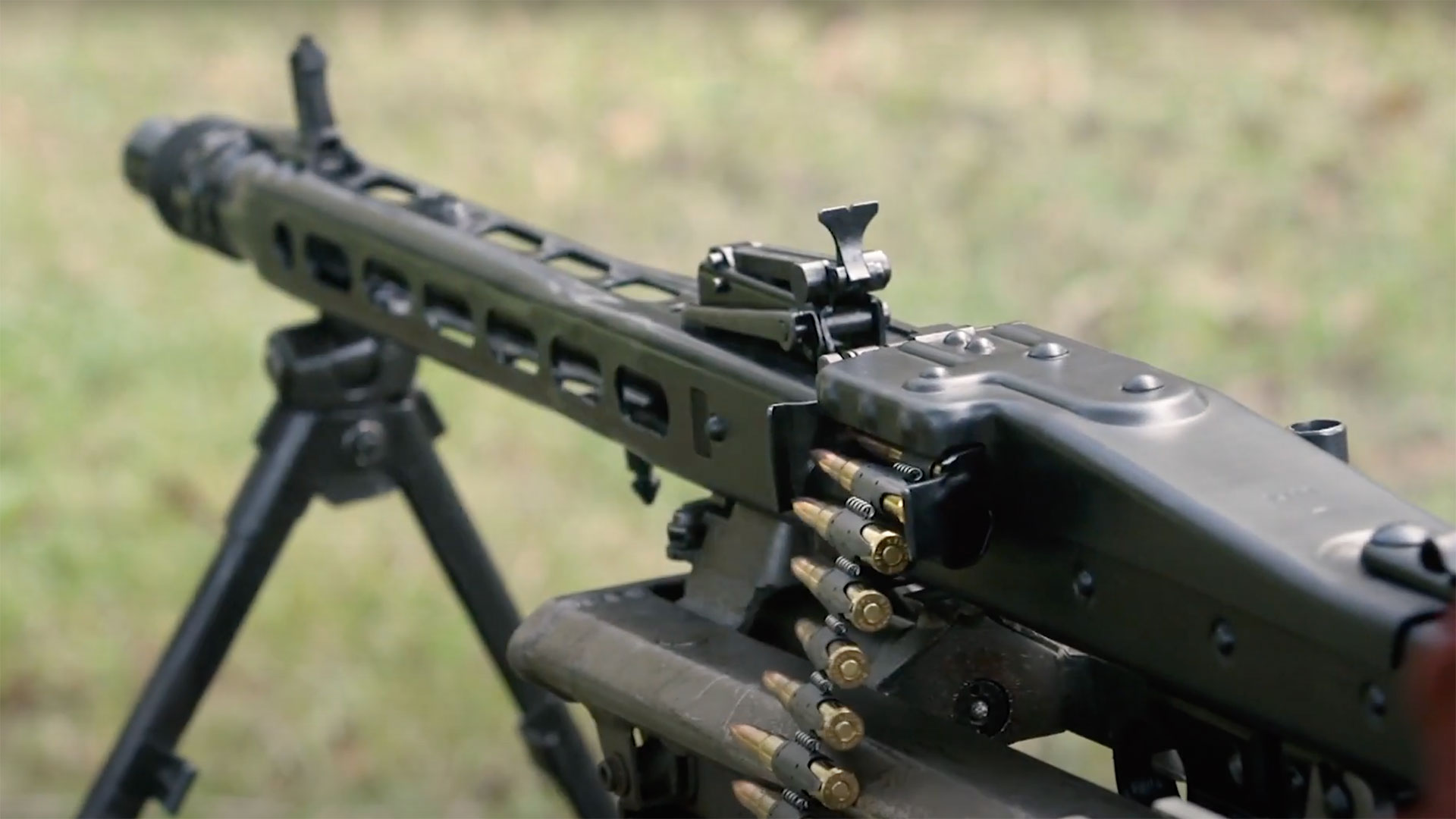
For the men of A Company, 116th Infantry Regiment of the 29th Infantry Division, the German fire was murderous. Landing at the “Dog Green” sector of Omaha, within in five minutes of hitting the beach, the company was essentially wiped out, with 91 killed and 65 wounded. The intense German defensive fire caused the landings at Omaha to stall as American troops desperately tried to find whatever cover they could on the beach. Luckily for many of them, Omaha had a shelf of shingle, or tidal rock, that provided some small degree of cover. However, they would still have to make their way up the rest of the beach and then up the bluffs in order to take it.
To watch complete segments of past episodes of American Rifleman TV, go to americanrifleman.org/artv. For all-new episodes of ARTV, tune in Wednesday nights to Outdoor Channel 8:30 p.m. and 11:30 p.m. EST.
It amazes me how many shooters — young and old — talk about their .44 Specials or .44 Magnums without having a clue as to their ancestry. Neither arrived on the revolver scene as full-blown innovations. They were derived in a stair step fashion.
Their story started in 1872 in what might be called an instance of Russian collusion. S&W introduced their first metallic cartridge-firing revolver in 1870. Named Model #3, it was chambered for the .44 Henry, same as used in Winchester’s Model 1866 rifles and carbines. Hoping for army contracts S&W submitted the new Model #3 to the U.S. Government for testing. It was almost immediately rejected because .44 Henry was rimfire — the government wanted only centerfires. So, S&W remodeled the .44 Henry cartridge to centerfire ignition and called it .44/100.
Colluding for Gold
A Russian general serving as a diplomat in America took note of the Model #3 and thought it would be an excellent sidearm for the Czar’s cavalry. Except he disliked the two-diameter heel-type bullet used in .44/100. The general had this crazy idea a bullet’s body should be the same diameter and fit inside a cartridge case. Since the Russians promised to pay for their S&W Model #3 in gold, the company was happy to accept their idea. Thus was born the S&W .44 Russian, and henceforth the .44/100 was called .44 American.
Early on factory .44 Russian loads contained roundnose bullets as heavy as 275 grains. Winchester’s 1899 catalog listed them at 255 gr., still roundnose. Some of these early factory loads had lube grooves exposed. Later all lube grooves were covered as would be right and proper with lead alloy bullets. Case length was 0.97″ and velocity was likely a bit over 700 fps. The black powder charge was 23 grains.
As matters progressed, the Russians wanted changes in the Model #3 and the allure of gold was incentive for S&W to make them. First model .44 Russian Model #3s looked identical to the company’s .44 Americans, but soon the Russians wanted some changes. Most notable were humps at the top of Model #3’s grips and odd-looking spurs extending from trigger guards. Barrel lengths were reduced from 8″ with the First Model Russians to 7″ on the Second Model Russians. Then there was a Third Model .44 Russian with 6.5″ barrel. It’s recognizable by a large thumb screw on the topstrap. A little-known fact is S&W sold about a quarter million .44s to the Russian Government.
All-American .44 Special
Now jump to 1907. S&W wanted to enter the large frame, swing-out cylinder market. As a cartridge for the Hand Ejector, First Model .44 (nicknamed triplelock) they introduced a wild and crazy idea. They lengthened .44 Russian’s case to 1.16″, using the exact same 246-gr. bullet at a similar velocity of about 750 fps. It was named .44 S&W Special. Factory loads carried either smokeless or black powder. S&W carried the .44 Special through four remodels stopping in 1966. In the 1980s they reintroduced Model 24s (Hand Ejector, Fourth Model) and Model 624s (stainless steel) and in the 21st century there have been some .44 Special limited editions.
Then in 1956 S&W knocked the gun world on its ear by introducing the .44 Remington Magnum with its introductory vehicle being a strengthened N-Frame. In 1957 the company went to model numbers with .44 Mags getting Model 29. Again, the new cartridge was a wonder of innovation (sarcasm intended). The new magnum case was the .44 Special stretched to 1.29″. However, bullets changed from 246-gr. RN to 240-gr. SWC with a gas check. Velocity changed also to nominal 1,470 fps. Those factory loads leaded like the dickens! I know — 18 such rounds came with my first S&W .44 Magnum in 1968.
Personally speaking, I’ve owned and handloaded for a multitude of revolvers for all three of these .44s. Of course, Russian and Special .44s can be safely fired in .44 Magnum revolvers, but I freely admit nowadays I’m far fonder of shooting the Russian version from Navy Arms replica 3rd Model No. 3.
Like me, it’s big but gentle.
I just received the below email from the Missouri AG:
Missouri Attorney General Condemns FBI’s Illegal Attempts to Harvest Concealed Carry Permit Information from Missouri Sheriffs
July 13, 2022 Contact: Constituent Services Office: 573-751-3321
JEFFERSON CITY, Mo. – Today, Missouri Attorney General Eric Schmitt sent a letter to FBI Director Christopher Wray demanding that they cease their attempts to illegally obtain information from local sheriffs on Missourians who have concealed carry permits. Missouri law specifically prohibits the sharing of information on concealed carry permit holders to any entity – local, state, federal, or otherwise.
“The FBI has absolutely no business poking around in the private information of those who have obtained a concealed carry permit in Missouri,” said Attorney General Schmitt. “The Second Amendment rights of Missourians will absolutely not be infringed on my watch. I will use the full power of my Office to stop the FBI, which has become relentlessly politicized and has virtually no credibility, from illegally prying around in the personal information of Missouri gun owners.”
The Missouri Attorney General’s Office became aware that the FBI is planning to travel to Missouri in August to do “audits” at sheriff departments across the state, which would include harvesting information on those who have legally obtained a concealed carry permit. The letter states, “It has come to my attention that the Federal Bureau of Investigation has informed several Missouri county sheriffs that they will be showing up in August to ‘audit’ CCW permit holder records. The FBI states that, ‘The audit includes an onsite review of your Concealed Carry Weapons Permits…’ Let me be perfectly clear. Allowing federal agents from the FBI to have access to records of Missourians who have a permit to carry a concealed weapon violates Missouri law and infringes on our Second Amendment rights.”
Missouri law states, “Information retained in the concealed carry permit system under this subsection shall not be distributed to any federal, state, or private entities . . . .” § 571.101.9(2), RSMo.
At the end of the letter, Attorney General Schmitt promises to use the full power of his Office to stop the FBI’s attempts to obtain information on Missouri concealed carry weapons permit holders.
The full letter can be found here: https://ago.mo.gov/docs/default-source/press-releases/2022-7-13-ltr-fbi.pdf?sfvrsn=5fbbdf7_2
Should be interesting if they and these sheriff’s attempt the audit.
Will the MO state police be waiting and once a record is presented to an FBI agent by a SO personnel, will they both be arrested under both the CCW records statute and the MO 2a Preservation statute?
Only by a court order pursuant to a criminal inquiry or investigation may Missouri CCW records be released by the county sheriff who issued it.

It is a lamentable aspect of the human condition that we seem inexorably driven to destroy ourselves. We drape our culture and our society in the mantle of civilization, but we are not really all that different from baboons or jackals. Ours is a tribal species, and our response to affront or perceived injustice is typically violence, even this deep in the Information Age.

The numbers are frankly breathtaking. The warring powers during the Second World War produced enough bullets to shoot every human being on the planet forty times. If you took every penny spent by the US on defense from the end of WW2 to the end of the Cold War you could raze and rebuild every man-made structure in the United States. Despite our extraordinary capacity to reason and solve problems, we homo sapiens have become quite adroit at offing one another.

Modern combat is at its base simply infuriating. In the age of drone warfare, the enemies of our Great Republic are faced with quite the maddening lot. Day or night, fair weather or foul, it really doesn’t matter. Death comes for you out of the ether in the form of a Hellfire missile launched by an armed UAV piloted by some former cheerleader-turned-Air Force pilot operating out of an air-conditioned building in Nevada. That has got to drive those dudes crazy.

The traditional faceless killer on the battlefield is the sniper. Artillery always racks up the biggest numbers, but there is something viscerally horrifying about catching a sniper’s bullet from an unexpected quarter. For as long as there have been accurate rifles, there have been soldiers behind them sowing havoc. This was certainly true during the American Civil War.
The Making of a Killer

John W. “Jack” Hinson was born in 1807. A wealthy Scots-Irish farmer in Stewart County, Tennessee, Hinson was known as “Old Jack” to his friends. He was a prosperous slave owner who attempted to remain neutral in the face of the brewing Civil War. He lived on his tobacco farm with his wife and ten children and was known for his temper.

When the Federal General U.S. Grant rolled through the area with his army, Jack welcomed him into his home. In February of 1862 Grant moved on to attack Fort Donelson and Fort Henry. As he departed, however, Grant left a Federal garrison behind.

“Bushwhackers” was the term applied to unconventional guerilla fighters who attacked Union forces from positions of concealment. In the fall of 1862, Hinson’s sons 17-year-old Jack and 22-year-old George were out deer hunting near their homestead. They came across a Union detachment that mistakenly took the two boys for bushwhackers. The Federal soldiers tied the two young men to trees, shot them to death, paraded their bodies around town as a message to others, and then stuck their heads on the gateposts back at the Hinson homestead. This turned out to be a really bad idea. You’ll note a similar plot arc drives the Mel Gibson Revolutionary War epic The Patriot. However, unlike The Patriot, this really happened.
The Crusade

At age 55 Jack Hinson sent his family away to safety and contracted with a local gunsmith to build him a very special .50-caliber Kentucky Long Rifle. This custom-built weapon sported a 41-inch barrel as well as set triggers and weighed a whopping 18 pounds. Hinson used this weapon to engage in a one-man sniper war against the occupying Federal troops. He sniped Union soldiers both in garrison as well as in military columns and transports. He also engaged Union gunboats while they were slowly plying the waters of the Cumberland and Tennessee Rivers. His first two victims were the Lieutenant and Sergeant responsible for murdering his two sons, both shot cleanly from ambush.

Hinson eventually fell in with Nathan Bedford Forrest’s Confederate cavalry mob and served as a local guide during their attack on the Union supply base at Johnsonville. Jack’s son Robert was of age and led a band of unconventional guerillas in the area of Tennessee they called home. However, this young man was killed by Union forces on September 18, 1863.

Using that obsolete muzzleloading long rifle “Old Jack” Hinson accumulated more than 100 kills. He sniped Union naval personnel off the decks of their warships and shot men out of the saddle as they passed by in supply convoys. His longest confirmed kill was nearly half a mile. Ultimately units from four different Federal regiments tracked him unsuccessfully.
The Rifle

The Kentucky Long Rifle was also known as the Pennsylvania Rifle or the American Long Rifle. At a time when men lived or died based upon their facility with a gun, the accuracy and firepower afforded by the Long Rifle was coveted indeed.


“From a flat bar of soft iron, hand forged into a gun barrel; laboriously bored and rifled with crude tools; fitted with a stock hewn from a maple tree in the neighboring forest; and supplied with a lock hammered to shape on the anvil; an unknown smith, in a shop long since silent, fashioned a rifle which changed the whole course of world history; made possible the settlement of a continent; and ultimately freed our country of foreign domination. Light in weight; graceful in line; economical in consumption of powder and lead; fatally precise; distinctly American; it sprang into immediate popularity; and for a hundred years was a model often slightly varied but never radically changed.”
— Captain John G. W. Dillin, The Kentucky Rifle

The Long Rifle was first developed in Southeastern Pennsylvania in the early 1700s. These early guns were crafted entirely by hand with little thought to interchangeable parts or mass production. When compared to the smoothbore muskets of the day these rifles were markedly more accurate. It was actually the advent of the rifled musket that facilitated the rise of the sniper on the modern battlefield.

The British Brown Bess musket that carried the Redcoats through the American Revolution was a smoothbore design with a 0.75-inch bore. The gun fired 0.69-inch balls. These intentionally undersized projectiles made the weapon notoriously inaccurate. However, given the profound amount of fouling that resulted from the crude black powder of the day, these dimensions ensured that the gun could remain in action through protracted firings without cleaning.

Rifled muskets like the Long Rifle offered much greater accuracy and velocities. These early rifles typically fired patched balls that were gripped tightly by the weapon’s rifling. However, the tight interface between ball and bore resulted in rapid fouling in action and demanded laborious reloading. The development of the Minie Ball helped alleviate this vice.


The Minie Ball was a cast lead hollow-based bullet designed by Claude-Etienne Minie. Minie Balls first saw widespread use during the Crimean War in the 1850s. The Minie Ball sported three grease-filled cannelures on the outside and a malleable skirt on the bottom. Upon firing powder gases tended to expand the skirt such that the bullet engaged the rifling without being unduly snug during loading. When carried in paper cartridges and fired through relatively precise weapons, like Jack Hinson’s Long Rifle, the Minie Ball afforded a decent rate of accurate fire as well.
The Rest of the Story

After the war “Old Jack” laid down his arms and returned home to Stewart County, Tennessee. He settled the estate of his son George, one of seven Hinson children who had succumbed to combat, occupying Union forces, or disease during the course of the war. While he bumped up against the law from time to time, for the most part, Hinson didn’t bother anybody and few people bothered him.

On April 28, 1874, Jack Hinson was at his new residence in Houston County, Tennessee, and complained of severe upper back pain. The local medical practitioner was summoned, and the usual treatments undertaken. Six hours later Hinson died. His presumptive diagnosis was meningitis. I obviously wasn’t there but given the rapidity of onset and tearing sensation between his shoulder blades I’d put my money on a dissecting aortic aneurysm myself. Old Jack was 67 at the time.


Jack Hinson’s shopworn .50-caliber Kentucky Long Rifle survives to this day. The gun bears the marks of 36 kills. However, the number of 100 or more seems more historically reliable based upon period sources. It has been suggested that Old Jack only documented the officers he shot on his deadly implement of violence.


The Finnish sniper Simo Hayha was likely history’s most successful sniper with more than 500 verified kills, all taken at fairly close range over the span of 100 days. Numerous Soviet snipers racked up counts in the hundreds during World War 2. The American Navy SEAL sniper Chris Kyle had 160 confirmed. However, each of these warriors used fairly modern equipment. Back in the 1860s, a Tennessee farmer with a grudge used a muzzleloading single-shot Kentucky Long Rifle to terrorize thousands of Federal troops. His exploits stand in bitter testament to the chaos that can be wrought by a single determined rifleman with a gun.


